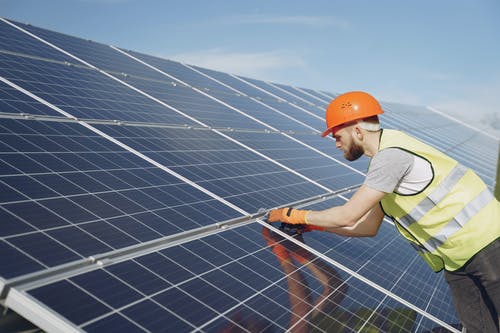
Solar Energy for a Long-Term, Dependable Future
Electricity and heat generated by the Sun’s photovoltaic energy and solar thermal energy are referred to as solar energy, respectively. Solar panels and mirrors are used to collect solar energy, which is both unlimited and renewable because it comes from the Sun and can be harvested in a variety of ways.
Photovoltaic solar cells transform sunlight directly into electricity by collecting photons (light particles) and releasing electrons, resulting in an electric current. Photovoltaic solar cells work by utilizing the so-called photovoltaic effect. While solar thermal collectors use panels or mirrors to capture and concentrate the Sun’s heat, converting it to a fluid and transmitting it through pipes to be used in buildings and structures, or even to generate electricity through solar panels Victoria, is a time-consuming process. Solar thermal collectors are used to capture and concentrate heat from the Sun.

It is possible to use solar systems as a heat source – solar panels that concentrate sunlight on a fluid that can achieve temperatures of up to 1,000 degrees Celsius can create heat. After being heated, the fluid condenses and transforms into steam, which spins a turbine, which in turn produces energy.
Solar systems may also serve as a light source if they are equipped with photovoltaic solar panels, which generate light that can be converted into electricity. Photovoltaic cells (photons) are arranged in groups to convert light (photons) into electrical energy (electrons).
Many people are now more concerned about climate change. However, the use of solar energy demonstrates that renewable energy sources are the cleanest and most realistic ways of preventing environmental degradation. Furthermore, it has an infinite number of resources and never runs out of them. The use of clean energy, rather than depending on finite fossil fuels such as coal and natural gas, or nuclear power, which have finite reserves, is becoming more popular. Clean energy is abundant and adaptable to natural cycles, thus the word “renewables.” They are required for a sustainable energy system that allows for today’s progress without jeopardizing future generations, which is currently lacking.
In addition, the industry is becoming more and more intensely competitive. Solar and wind energy are already more affordable than traditional sources of electricity in many regions of the world, and wind energy is much more affordable.

Wind and solar photovoltaic technologies, for example, have seen their prices fall drastically in recent years, making them entirely competitive with traditional energy sources in an increasing number of locations throughout the world. Because of economies of scale and technological innovation, renewable energy is rapidly becoming the most environmentally and economically viable option for generating power in the future.
Another significant benefit of solar energy is that it contributes to the production of wealth and jobs. Wind energy is regarded as a “native” source of energy because of its broad availability. As a result, it lessens the demand for energy imports while also generating local money.
To achieve a more sustainable future, solar energy generation and efficient use are encouraged and supported.

















